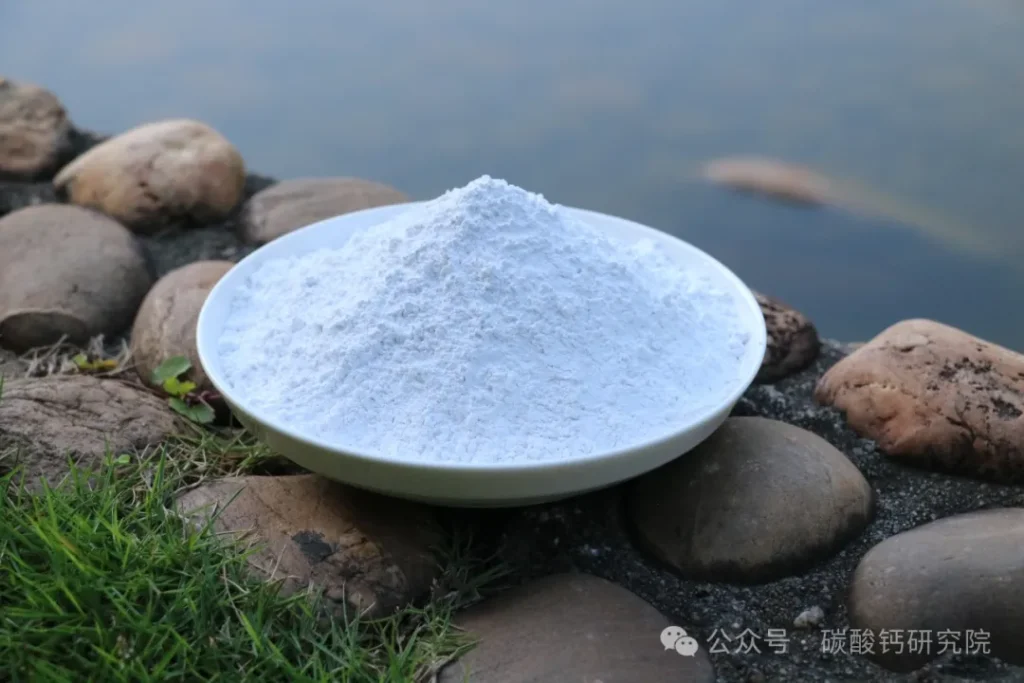Precipitated Calcium Carbonate (PCC) is a versatile additive in coatings, offering several functional benefits due to its controlled particle size, shape, and purity.

Production of PCC and PCC for coating
Calcium carbonate is the most common mineral on the earth’s surface, besides quartz. It exists in three different mineral forms: calcite, aragonite and vacerate.
Calcite is the most common natural form. Aragonite and vacerate are metastable. They will change into calcite permanently. Calcium carbonate can crystallize in many forms. This makes it versatile. It helps change the physical and chemical properties of filled or coated paper. We create unique kinds of precipitated calcium carbonate (PCC) through precise synthesis.
Physical properties of PCC for coating
High whiteness, or blue light reflectance, is very important for paper. It helps create a strong contrast between printed and unprinted areas. Calcium carbonate is known for its higher whiteness than kaolin and talc pigments. Impurities in limestone are often gray or black. They lower the whiteness. However, in the PCC production process, slaked lime can effectively remove these impurities. For ground calcium carbonate (GCC), you can remove some limestone impurities. This can be done by flotation or by choosing the right ore. If the impurities are naturally occurring, additional whiteness can be obtained by bleaching. The ISO whiteness of PCC or GCC is 93% to 96%, while kaolin and talc are significantly lower, about 84% to 87%.
Flow characteristics and running performance of PCC-containing coatings
PCC has a high aspect ratio and narrow particle size. This makes it harder to work with than GCC, which has a round shape and a wide particle size distribution. Challenges include pumping options and flow traits in coating machines. PCC can rotate around its axis more easily than delaminated flaky kaolin. We can assume that needle-shaped PCC particles align along their long axis when under shear stress. This shows that coating PCC has a lower viscosity than delaminated kaolin when both have the same solids content.
Application of various grades of PCC in coating
In double or triple coated papers, PCC with fine particle size is found to be the best choice. In this application, fine particle size means APS (average particle size) of 0.3-0.4um. The type of base paper doesn’t matter. It can be mechanical woodfree, made only from chemical wood pulp, or mechanical wood. Mechanical wood contains at least 10% groundwood pulp. Using plastic pigment can be swapped for PCC. This change makes the coating much more cost-effective. If you don’t need a high gloss finish, you can get a natural high gloss with light calendering. This method offers more bulk and better stiffness. It also improves opacity and whiteness compared to other pigments.
The pre-coat must be a coarser coating pigment. It is recommended to use PCC with APS of 0.6-0.8um so that the structure of the pre-coat is relatively open. This open structure greatly boosts opacity. It does this by increasing voids that scatter light. This open structure can cause water retention issues. To fix this, you might need to add some CMC with longer molecular chains or thickeners to the coating.
Matte paper is tough to make. It needs good smoothness, low gloss, high print gloss, and proper ink curing. You can get this property combination by using PCC with a higher APS and a smaller particle size range.
Properties of PCC coated paper
Coated paper with PCC offers several benefits:
- High whiteness
- Low b-value
- High light scattering, which means better opacity
- High bulk effect
- Good fiber coverage
- Adjustable ink curing, leading to great printing properties
- Low bubbling tendency
